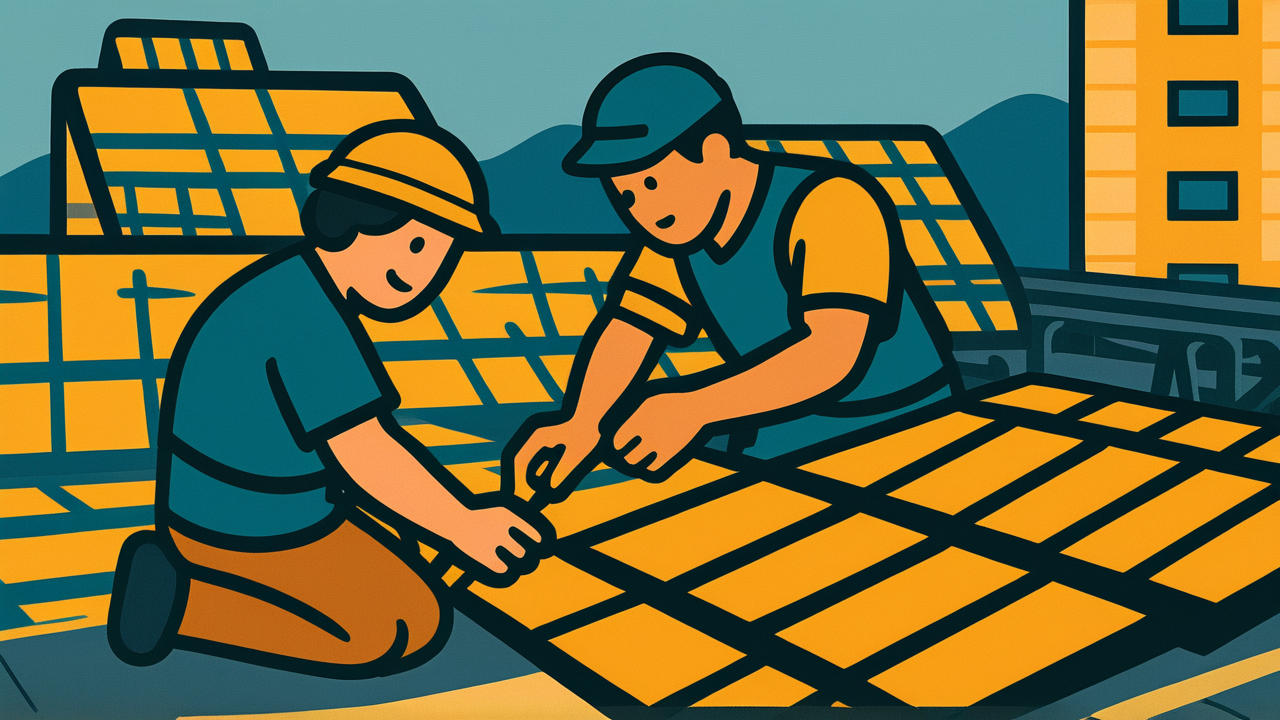How to Read “屋上屋を架す”
Okujou oku wo kasu
Meaning of “屋上屋を架す”
“Build house on top of house” is a proverb that expresses the meaninglessness of adding unnecessary things to something that is already sufficient.
Just as building another roof on top of an existing roof is structurally meaningless, this expression warns against the foolishness of adding unnecessary decorations, explanations, or procedures to something that is already complete or functioning adequately. This proverb is particularly used to criticize wasteful duplication or excessive ornamentation.
In modern times, it is used in situations such as repeatedly discussing the same agenda items in meetings, adding further detailed explanations to already clear documents, or adding various unnecessary elements to completed projects. In contemporary society where efficiency is highly valued, this proverb shares the spirit of “simple is best” and serves as a reminder of the importance of eliminating waste.
Origin and Etymology
“Build house on top of house” is said to originate from a historical account recorded in the ancient Chinese classic “Book of Han.” This expression was originally used in the form “okuka kaoku” (building a house under a house).
It arose from a story in ancient China where someone tried to build another roof on top of an already roofed building when constructing a house. From a physical standpoint, building a roof on top of a roof is structurally meaningless and would actually make the entire building unstable.
This historical account came to be used as a warning when writing. It particularly became established as an expression of the foolishness of adding unnecessary embellishments or explanations to already completed texts or arguments.
It was introduced to Japan along with Chinese literature and became established in the form “Build house on top of house.” This expression can be found in Edo period literature and was frequently used when discussing scholarship and writing techniques. Even in modern times with advanced construction technology, this metaphor remains very easy to understand and continues to be passed down as an expression of the foolishness of wasteful duplication.
Usage Examples
- This project proposal is already perfect, so adding more materials would be like “Build house on top of house”
- Wouldn’t adding another explanation to a manual that already has detailed instructions be “Build house on top of house”?
Modern Interpretation
In modern society, the concept of “Build house on top of house” has taken on more complex meanings. In our information age, we tend to constantly seek “more information” and “more detailed explanations,” but this doesn’t necessarily create value.
In business settings, there are endless examples of adding excessive animations or decorations to presentations, or expanding simple reports to dozens of pages. These can truly be called modern versions of “Build house on top of house” behavior.
On the other hand, in modern times, “layered safety measures” and “multifaceted verification” are often considered important, and what may appear to be “Build house on top of house” might actually be essential preparations. For example, backup systems for backups or verification by multiple experts may seem redundant but hold important meaning.
In today’s digital age, the ability to select and filter information has become more crucial. This proverb sounds an alarm against tendencies to add everything possible just because it’s technically feasible—excessive decoration on social media, unnecessary feature additions to websites, and app complexity. Modern people need the discernment to determine what true value is.
When AI Hears This
In today’s digital society, the phenomenon of “building a roof on top of a roof” occurs on an unprecedented scale compared to traditional times. Looking at information spread on social media, countless “explanations,” “summaries,” and “reaction videos” are layered on top of original content, creating multi-tiered structures of information that generate no essential value.
Particularly noteworthy is the “roof-on-roof” problem in AI training data. Large language models like ChatGPT learn from text across the internet, which already includes content generated by other AIs. This means AIs are learning from AI outputs, and new AIs are being trained based on that data—a phenomenon called “model collapse.” This represents a典型的な屋上屋構造 that leads to information degradation.
Corporate meeting systems follow the same pattern, where “pre-meetings,” “preparation meetings,” and “coordination meetings” multiply endlessly for what should be straightforward decision-making, while the actual decisions get postponed. The widespread adoption of Zoom has only accelerated this trend.
Digital-age “roof-on-roof” structures are particularly troublesome because, unlike classic forms of waste, they appear valuable on the surface. Information processing and meeting subdivision get justified as “thoroughness” or “transparency,” but in reality, they become structural problems that distance us from what truly matters.
Lessons for Today
“Build house on top of house” teaches modern people about “the aesthetics of subtraction.” While we’re good at adding things, having the courage to remove unnecessary elements is actually more difficult.
Look back at your daily life. Do you really need all the apps on your smartphone? Are all the clothes in your closet being used? In creating work materials, are you expressing what you really want to convey in a simple way?
This proverb also frees us from “the trap of perfectionism.” Sometimes, trying to make something that’s already good enough even better by adding excessive touches can actually damage its original goodness. Just as adding too many seasonings can ruin a dish, in life too, it’s important to develop a sense for what is “just right.”
In modern society, we’re flooded with information and choices. That’s precisely why we need the wisdom to discern what is truly valuable and let go of unnecessary things. This proverb gently teaches us that true richness lies in simplicity.



Comments